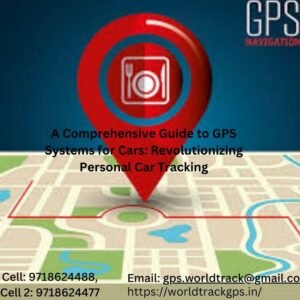In the ever-evolving world of technology, satellite trackers have become indispensable tools for various applications, from personal safety to asset management. As we approach 2025, the market is teeming with advanced options offering a range of features and capabilities. This article will guide you through the best satellite trackers available, ensuring you make an informed decision.
Table of Contents
- Understanding Satellite Trackers
- Key Features to Consider
- Top Satellite Trackers of 2025
- How to Choose the Right Tracker for You
- Applications of Satellite Trackers
- Advantages of Using Satellite Trackers
- Cost Considerations
- Future of Satellite Tracking
- Frequently Asked Questions
- Conclusion
Understanding Satellite Trackers
Satellite trackers are devices that use the Global Navigation Satellite System (GNSS) to pinpoint their location. These devices transmit location data to satellites, which in turn relay this information to users or monitoring centers. Unlike traditional GPS trackers, satellite trackers can function in remote areas with no cellular network coverage, making them perfect for adventure, safety, and remote asset tracking. Learn more about how GPS tracking systems work from WorldTrack.
Key Features to Consider
When selecting a satellite tracker, several key features should be evaluated:
- Coverage: Ensure that the tracker provides global coverage if needed.
- Battery Life: Look for devices that offer sufficient battery life for your needs.
- Durability: The tracker should be robust enough to withstand harsh conditions.
- SOS Function: An essential feature for emergencies, allowing you to send distress signals.
- Data Plans: Consider the cost and availability of data plans offered by different service providers.
- Tracking Frequency: Determine how often you need location data to be updated.
- Ease of Use: The device should be intuitive and user-friendly.
- Additional Features: Look for features such as geofencing, movement alerts, or integration with other devices.
Top Satellite Trackers of 2025
Here are some of the top-performing satellite trackers expected to dominate the market in 2025:
| Tracker | Key Features | Best Use | Approx. Price |
|---|---|---|---|
| Tracker A | Global Coverage, Long Battery Life, SOS Button | Adventure, Remote Travel | ₹ 33,200 |
| Tracker B | Compact Design, Real-time Tracking, Geofencing | Asset Tracking, Personal Safety | ₹ 29,050 |
| Tracker C | High Durability, Weatherproof, Custom Alerts | Industrial, Outdoor Work | ₹ 37,350 |
| Tracker D | Easy to Use, Affordable, Basic SOS Function | Personal Tracking, Family Use | ₹ 20,750 |
How to Choose the Right Tracker for You
Choosing the right satellite tracker depends on your specific needs. Ask yourself:
- What will you use it for?
- What conditions do you need the tracker to withstand?
- What level of precision and update frequency do you require?
- What is your budget?
By carefully evaluating these factors, you will be able to find a tracker that meets your requirements. Consider personal GPS tracking devices for individual safety from WorldTrack.
Applications of Satellite Trackers
Satellite trackers have a wide range of applications, including:
- Personal Safety: For hikers, travelers, and those in remote locations.
- Asset Tracking: For vehicles, cargo, and equipment. Check out asset GPS tracker devices.
- Pet Tracking: For ensuring the safety of pets, especially those that tend to roam.
- Fleet Management: For businesses to monitor and manage their vehicles.
- Emergency Response: For search and rescue operations.
Advantages of Using Satellite Trackers
Here are some significant advantages of using satellite trackers:
- Global Coverage: Functionality in areas without cellular connectivity.
- Real-Time Tracking: Provides up-to-the-minute location data.
- Increased Security: Helps recover stolen assets and locate missing persons.
- Peace of Mind: Enhances personal safety and security.
- Improved Efficiency: Optimizes fleet management and asset utilization.
Cost Considerations
The cost of satellite trackers varies based on features and service plans. Initial costs for the device can range from ₹ 16,600 to ₹ 49,800, with monthly service fees adding to the overall cost. Evaluate your needs and compare service plans to determine the best fit for your budget. Remember to consider the long-term value offered by these devices in terms of safety and security.
Future of Satellite Tracking
The field of satellite tracking is constantly evolving. Future advancements are expected to include more compact, energy-efficient devices, increased location precision, and broader network capabilities. There may also be developments in integrating AI and machine learning for predictive tracking and anomaly detection. In the coming years, the importance of satellite trackers in various sectors will only continue to grow.
Frequently Asked Questions
Satellite trackers use GNSS to pinpoint their location and then transmit this data to satellites, which relay the information to you or monitoring centers.
Yes, satellite trackers are generally very accurate. However, accuracy can be affected by factors like weather, topography, and device quality.
Yes, that is a key benefit of satellite trackers. They can transmit data in remote areas where there is no cell service.
Battery life varies by device, ranging from a few days to several weeks, depending on usage.
Common uses include personal safety, asset tracking, pet tracking, and emergency response.
Conclusion
In conclusion, satellite trackers are essential for those who need location monitoring in areas with or without cellular coverage. By considering the key features, exploring the top options available, and understanding your specific needs, you can choose the best satellite tracker for your unique situation. For advanced GPS tracking solutions that offer reliability and performance, be sure to contact WorldTrack GPS to explore their offerings today!
Get in Touch With WorldTrack GPS Now!Copyright © All rights reserved.

